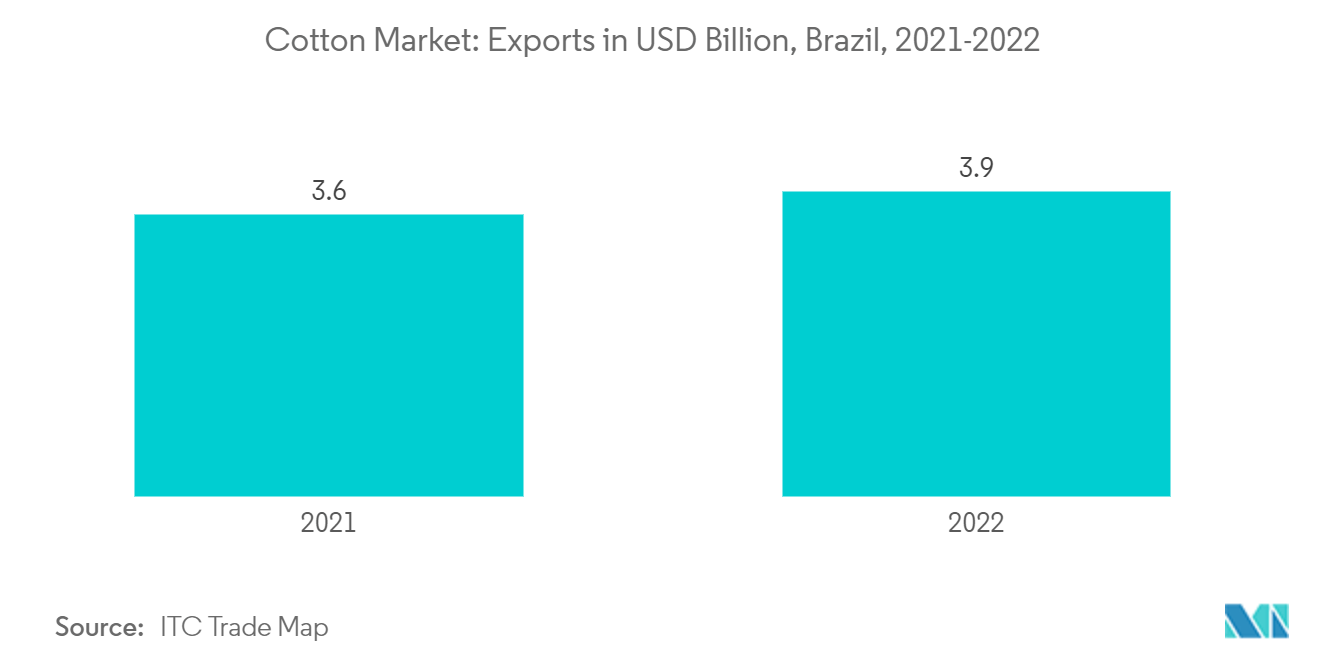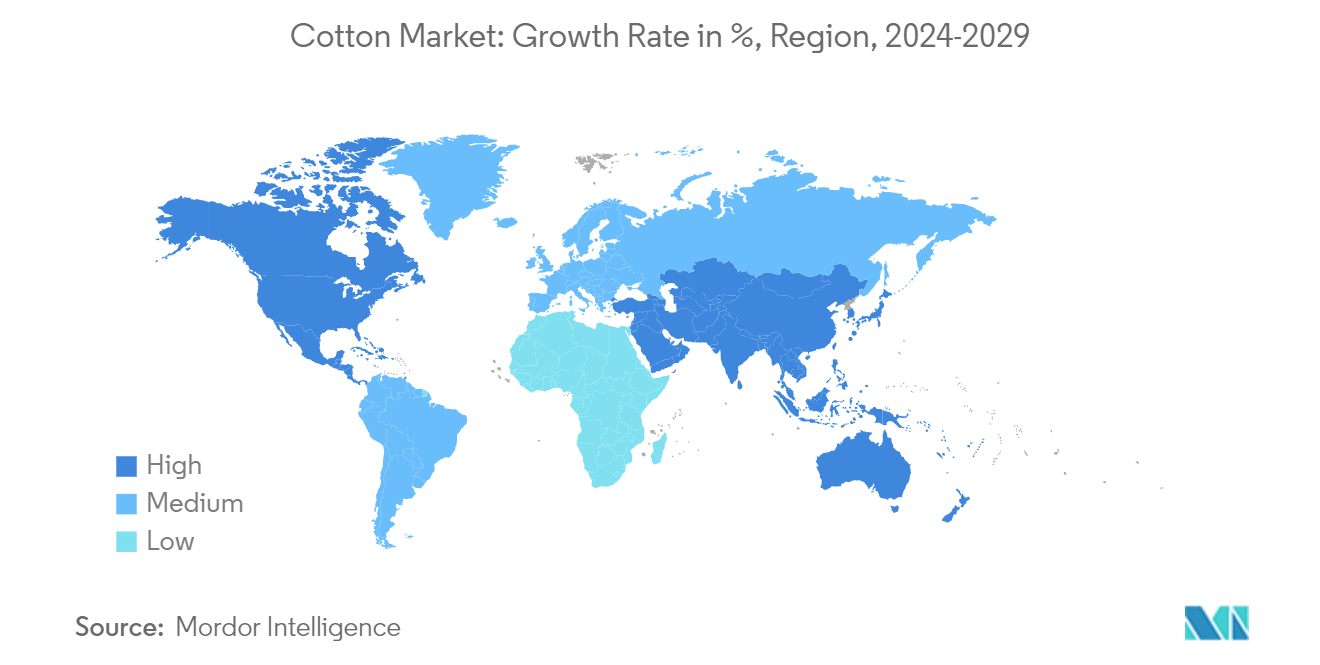Market Trends of Cotton Industry
Increasing Demand for Cotton Exports
- Various industries, from apparel manufacturing to home furnishings and industrial products, are increasingly turning to cotton, propelling the market's growth. Cotton finds its way into medical gauze, cotton swabs, traditional diapers, and more.
- Beyond these, cottonseed oil, a byproduct of the cotton plant, serves diverse purposes, including cooking, soap making, and cosmetics. This surge in applications has led to a rising global demand for cotton. Notably, the United States Department of Agriculture (USDA) highlights the United States as the world's leading cotton exporter.
- Furthermore, the United States stands as a pivotal player in the global cotton arena, both as a major producer and exporter. Currently, the United States textile mills consume around 7.6 million bales of cotton each year. Of this, 57% is transformed into apparel, over a third finds its way into home furnishings, and the rest is utilized for industrial products.
- Additionally, data from the ITC Trade Map reveals that in 2023, the top five cotton-exporting nations were China, the United States, India, Brazil, and Pakistan, holding shares of 20.7%, 14.1%, 12.6%, 6.2%, and 5.9% respectively. Highlighting Brazil's cotton export trajectory, ITC Trade Map data shows a rise from USD 3.6 billion in 2021 to USD 3.9 billion in 2022.

Asia Pacific Holds a Significant Share
- Asia-Pacific commands a notable portion of the global cotton market. China stands out as a leading player, not only producing but also exporting cotton on a worldwide scale. Cotton cultivation spans across 24 of China's 35 provinces, engaging nearly 300 million individuals in its production.
- Data from the United States Department of Agriculture highlights that in the 2022/2023 crop year, China's cotton yield reached approximately 2,122 kg per hectare. India, securing the second position, recorded a yield of 443 kg per hectare. Over the years, both nations have seen substantial growth in cotton production. The Cotton Corporation of India reports that India contributes to about 22% of the global cotton output.
- In 2023, the Cotton Corporation of India unveiled the Bale Identification and Traceability System (BITS), harnessing Blockchain Technology. Each cotton bale is now equipped with a QR code, facilitating seamless tracking of its origin, processing location, storage specifics, and quality metrics, complete with timestamps. The Ministry of Textiles rolled out the Kasturi Cotton initiative, ensuring premium quality cotton with traceability. TEXPROCIL, in partnership with CCI and under the aegis of the Ministry of Textiles, is steering this initiative. All ginners nationwide are now authorized to produce Kasturi Cotton, adhering to stringent quality standards.
- In both China and India, the textile sector remains dominant, consuming the majority of the domestically produced cotton. Given this strong demand in key nations like India and China, the Asia-Pacific region is poised to see a surge in cotton production during the forecast period.


